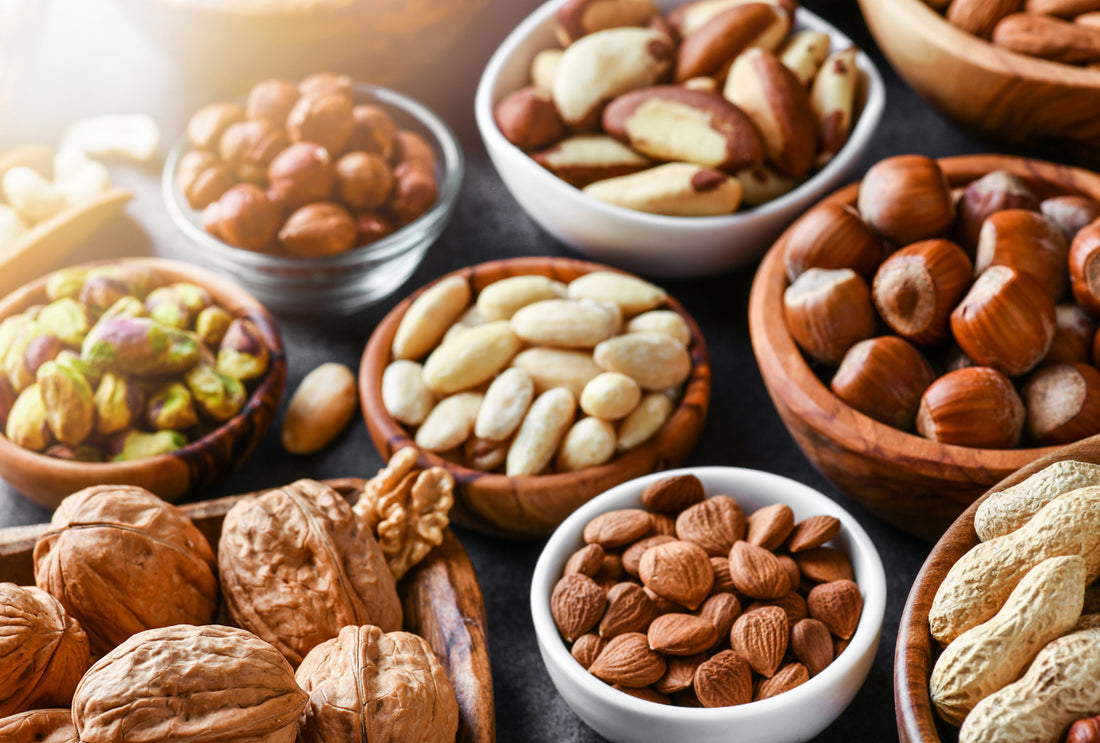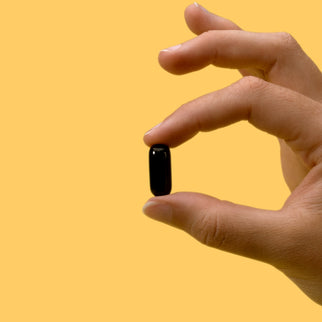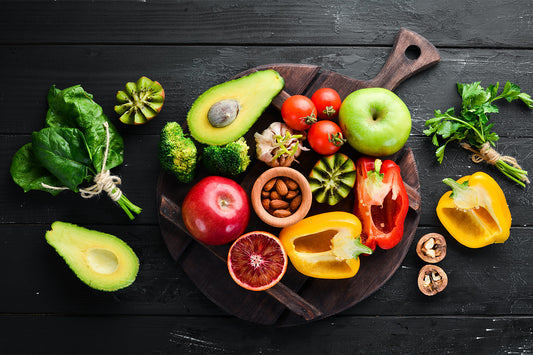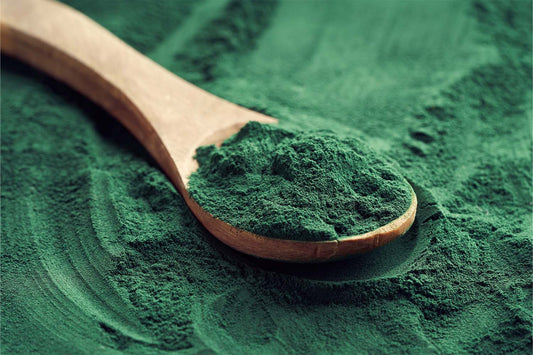Want to hear something nuts? Snacking on various types of nuts can provide you with healthy sources of dietary fats. Omega-3 fatty acids are a valuable nutrient in your diet, and several different types of nuts can provide you with them.
Knowing which nuts are highest in omega-3 will help you plan a balanced diet with healthy sources of omega-3 and decide how to get the most of this healthy fat in your diet.
What Are Omega-3s?
Omega-3s are a type of polyunsaturated fatty acid found in the body. These fatty acids can serve several important functions in the body, as they can provide a source of energy while also serving as an essential building block of cell membranes in the body.
There are three main types of omega-3 fatty acids:
- Alpha-linolenic acid (ALA), an omega-3 precursor
- Docosahexaenoic acid (DHA)
- Eicosapentaenoic acid (EPA)
All three omega-3 fatty acids are great for supporting your health, and your body needs all of them. ALA can be converted into EPA and then to DHA, but the conversion (which occurs primarily in the liver) is very limited, with reported rates of less than 15%. Therefore it may be more efficient to eat DHA and EPA directly. ALA omega-3s are the easiest to get through a standard diet since they are in many plant foods, but you will have to be more intentional about consuming DHA and EPA.
What Are the Health Benefits of Omega-3s?
Since omega-3s have such an important part in supporting the growth and function of your body’s cells, they can have a vital influence on how cells in your body interact with each other. By influencing how cells interact, they can help support the healthy function of several bodily systems.
Consuming omega-3 fatty acids regularly could offer the following health benefits:
- Support cholesterol levels already within the normal range
- Maintain a healthy blood pressure
- Support overall heart health
- Maintain joint health
- Support overall emotional wellness
Are Nuts a Good Source of Omega-3s?
Nuts can be a great source of healthy omega-3 fats if you choose the right ones. Many nuts contain omega-3 fatty acids, which can help support heart health and overall cardiovascular function. However, relying on nuts for your nutrition always comes with a big watchout.
Since they are high in fat, nuts are also high in calories, so if you’re not careful, the calories can add up quickly. You only need four to six servings a week to enjoy the potential health benefits. One serving is about 1 ounce, or a small handful.
Omega-3 and Calorie Content
|
Source |
ALA (mg)* |
DHA + EPA (mg)* |
Calories* |
|
Iwi life Omega-3 Dietary Supplement |
30 mg per serving |
250 per serving |
10 per serving |
|
Walnut |
2570 |
0 |
185 |
|
Pecan |
280 |
0 |
201 |
|
Pistachio |
82 |
0 |
162 |
|
Macadamia |
58 |
0 |
204 |
|
Pine Nuts |
32 |
0 |
191 |
|
Hazelnut |
25 |
0 |
178 |
|
Chestnut |
21 |
0 |
70 |
|
Brazil Nuts |
6 |
0 |
167 |
|
Almond |
0 |
0 |
164 |
*Values per 1-ounce serving unless otherwise indicated
Which Nuts Are Highest in Omega-3 Fatty Acids?
When eaten in moderation, nuts are an excellent addition to your diet, serving as a healthy way to obtain essential fats in your nutrition. Here are a few nuts with the highest omega-3 fatty acid content.
1. Walnuts
When you think of nuts with omega-3 fatty acids, walnuts are likely the first example you think of. Just one ounce of walnuts contains an impressive 2.57 g of ALA omega-3 fatty acids. Walnuts also have other great benefits, as they are also high in protein, potassium, fiber, and antioxidants, which can help support healthy cell function.
Walnuts can make for an excellent snack, a healthy topping for your oatmeal, or a nutritious addition to your baking recipes.
2. Cashews
Cashews are not as high in omega-3 fatty acids as others on this list, but they still contain an admirable 46 mg in a one-ounce serving. Cashews are not just high in omega-3s, but they also feature over 2 g of healthy omega-6 fatty acids. On top of their healthy fat content, cashews also feature fiber and protein, along with minerals like calcium, magnesium, iron, and potassium.
Cashews are great for a party or get-together — keep a bowl of cashews ready for snacking. You can also soak and blend cashews to make creamy sauces and vegan cheeses.
3. Macadamia Nuts
Macadamia nuts provide 58 mg of omega-3 fatty acids and an even more respectable 369 mg of omega-6 fatty acids, making them a great choice for supporting cardiovascular health in moderation. Like the other nuts on this list, macadamia nuts also have more to offer than just their healthy fats. Specifically, macadamia nuts are high in antioxidants, like vitamin E and polyphenols.
Macadamia nuts are well-loved as a baking ingredient, specifically in white chocolate macadamia nut cookies, but they make a great snack on their own too.
4. Pistachios
As great as pistachios taste, their omega-3 content is just another exciting upside. A one-ounce serving of pistachios has 82 mg of omega-3 fatty acids. Pistachios are very protein dense as just one ounce provides a solid six grams of protein. However, pistachios are also high in vitamin B6, which supports a healthy nervous system.
You can also tell by their green pigment that they have carotenoids, plant compounds that cause a green color and act as antioxidants in the body. As a result, pistachios can also support the healthy aging of cells as well as overall heart health.
Pistachios are fun to break open and snack on, but they can also be sprinkled onto salads or ground up into sauces or dressings.
5. Pine Nuts
These underrated nuts are another great source of both omega-3s and omega-6s. Pine nuts have about 46 mg of ALA omega-3s and an impressive 9.41g of omega-6s per cup. Pine nuts have protein, iron, vitamin K, and magnesium to support healthy muscles and cardiovascular function. These nuts also have the antioxidant vitamin E to support healthy skin.
Pine nuts are the foundation for a delightful pesto that can be used for pasta and pizzas.
6. Brazil Nuts
Brazil nuts are a sight to behold as they are much larger than your standard peanut but are packed with nutrients. In a one-ounce serving, these nuts have 10 mg of ALA omega-3 fatty acids and 6.78 g of omega-6 fatty acids.
Brazil nuts are a little unique since they are also full of selenium, which has strong antioxidant properties to support the healthy aging of cells. Like other nuts, they are also high in protein and fiber.
Brazil nuts are a great part of a mixed nut blend for parties.
7. Pecans
In a one-ounce serving of pecans, you can enjoy a remarkable 280 mg of omega-3 fats and 5.84 g of omega-6 fats. Pecans are full of other vitamins and minerals, like vitamin A, vitamin E, and calcium, to support healthy eyes, skin, and bones.
You can snack on pecans, put them in oatmeal, mix them with salads, or add them to baked goods like pecan pie. Pecans can be used whole, chopped, or ground up. Roasted pecans with just a touch of salt make for a wonderful snack.
8. Hazelnuts
Made famous for chocolate hazelnut spreads, hazelnuts can be part of a decadent snack, but they can also provide you with healthy omega-3 fatty acids. Hazelnuts offer 25 mg of omega-3 fatty acids and 2.22 g of omega-6 fatty acids. Hazelnuts also offer fiber and protein with a ton of great antioxidants to support healthy cells.
You can snack on hazelnuts or grind them into a delightful treat with cocoa powder and oil.
What Are Other Sources of Omega-3s?
Although the nuts listed above are all positive sources of ALA omega-3, it is important to point out that ALA is the easiest form of omega-3 to add to your diet.
Other food sources of ALA omega-3 are:
- Canola oil
- Chia seeds
- Flaxseed oil
- Hemp seeds
However, a common misconception is that these forms of omega-3 will provide you with the essential fatty acids you need to support your health and wellness. In fact, you should obtain both the DHA and EPA omega-3s in your diet as well.
Eating fatty fish is one of the most common ways to get DHA and EPA omega-3s. Examples of fatty, oily fish include mackerel, salmon, tuna, and sardines. Experts recommend eating two servings of fish per week to obtain enough DHA and EPA in your diet. However, you don’t necessarily have to eat fish to get these two essential fatty acids.
Another option is to take fish oil supplements. These supplements take the oil from the tissues of fatty fish and put it into a capsule or bottle. However, fish and fish oil supplements won’t work for vegans or people with seafood allergies — not to mention people who don’t appreciate their residual fishy taste.
You can turn to algae for an option that provides DHA and EPA omega-3s while remaining friendly to vegans and those with seafood allergies. Algae provides a pleasant alternative to fishy supplements, offering both essential fatty acids with no fishy breath. iwi life offers algae-based omega-3 supplements that are great for any lifestyle, offering all the benefits of fish oil without the downsides.
Get Your Omega-3s With iwi life
Nuts are a great snack for getting more healthy omega-3s in your diet, but they don’t provide all the omega-3s you need and they are calorie dense. For help getting more DHA and EPA in your daily nutrition, look no further than iwi life.
At iwi life, we provide an easy way to obtain both essential nutrients with just one daily softgel. Try our daily omega-3 supplement to start supporting your health and wellness. To see all of the ways algae can support your health, explore our complete family of iwi life algae-based omega-3 supplements.
Sources:
Nuts and your heart: Eating nuts for heart health | Mayo Clinic
FoodData Central | USDA
Fish and Omega-3 Fatty Acids | American Heart Association
Publication Date:
Original Publication Date - 6/16/23
Last Revision Date - 3/11/24



















